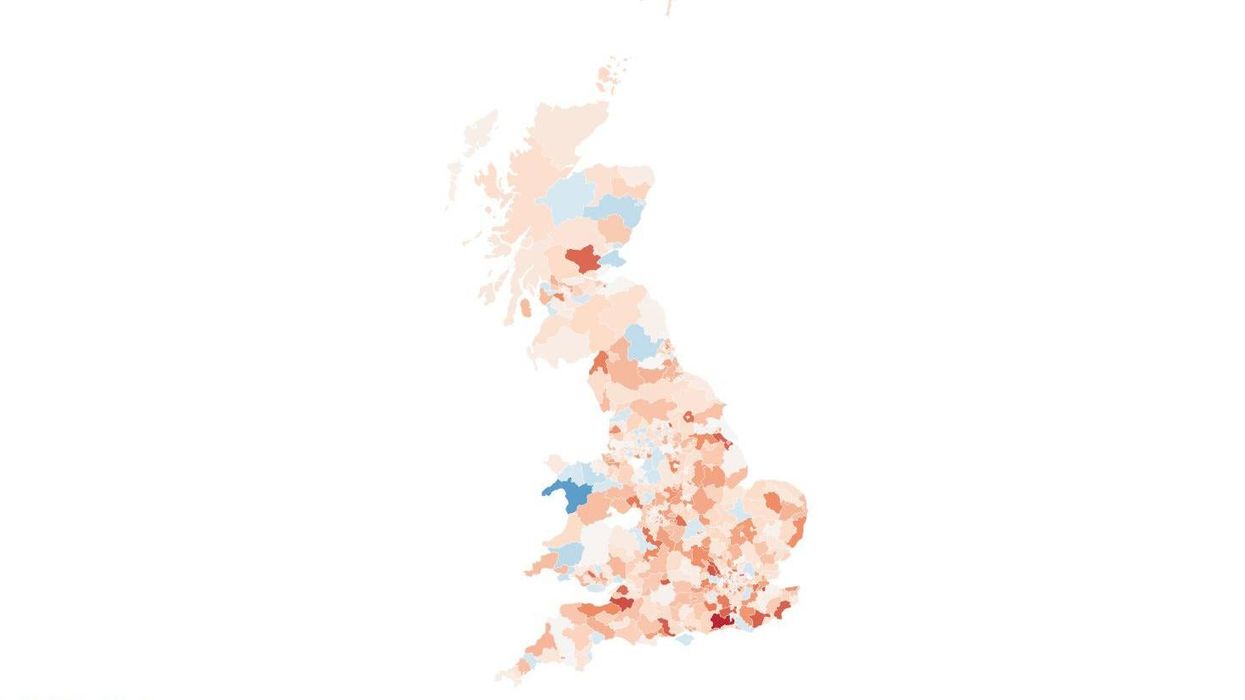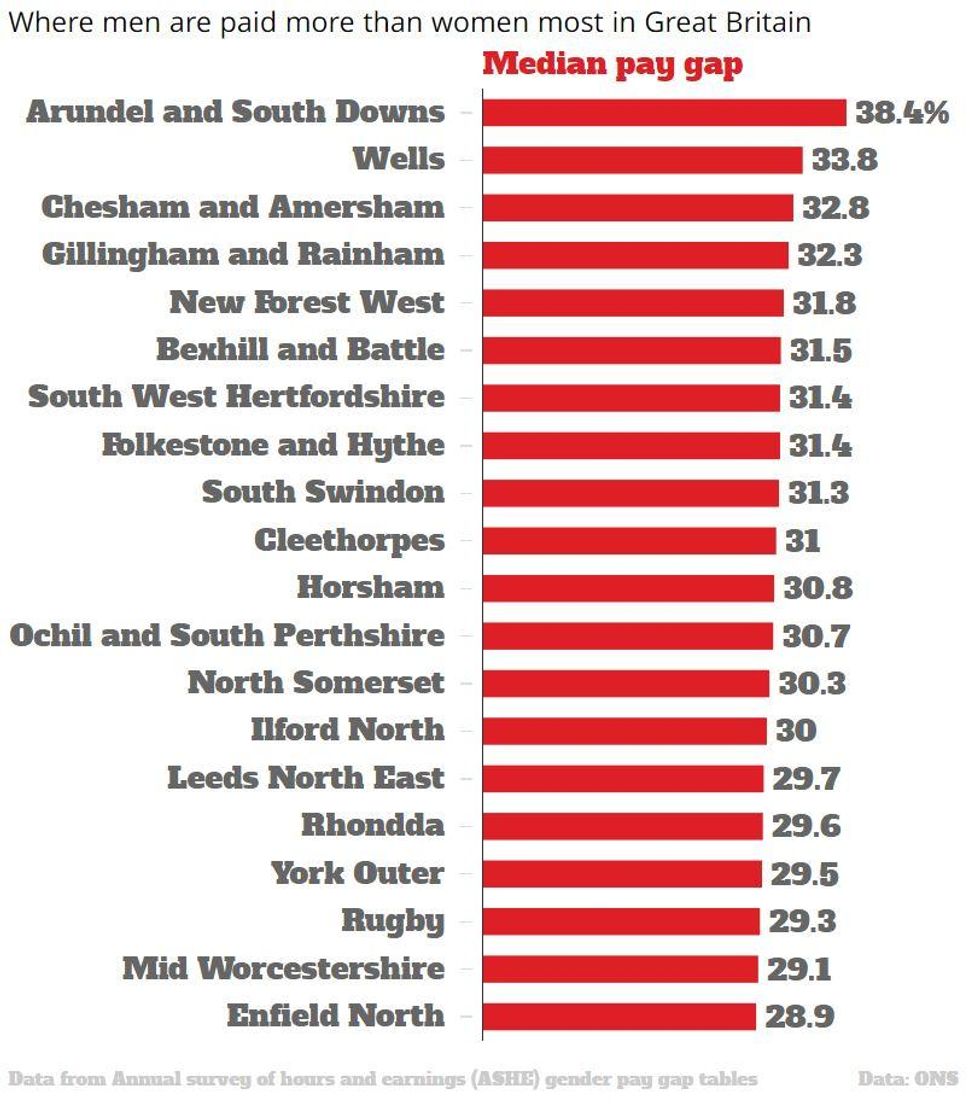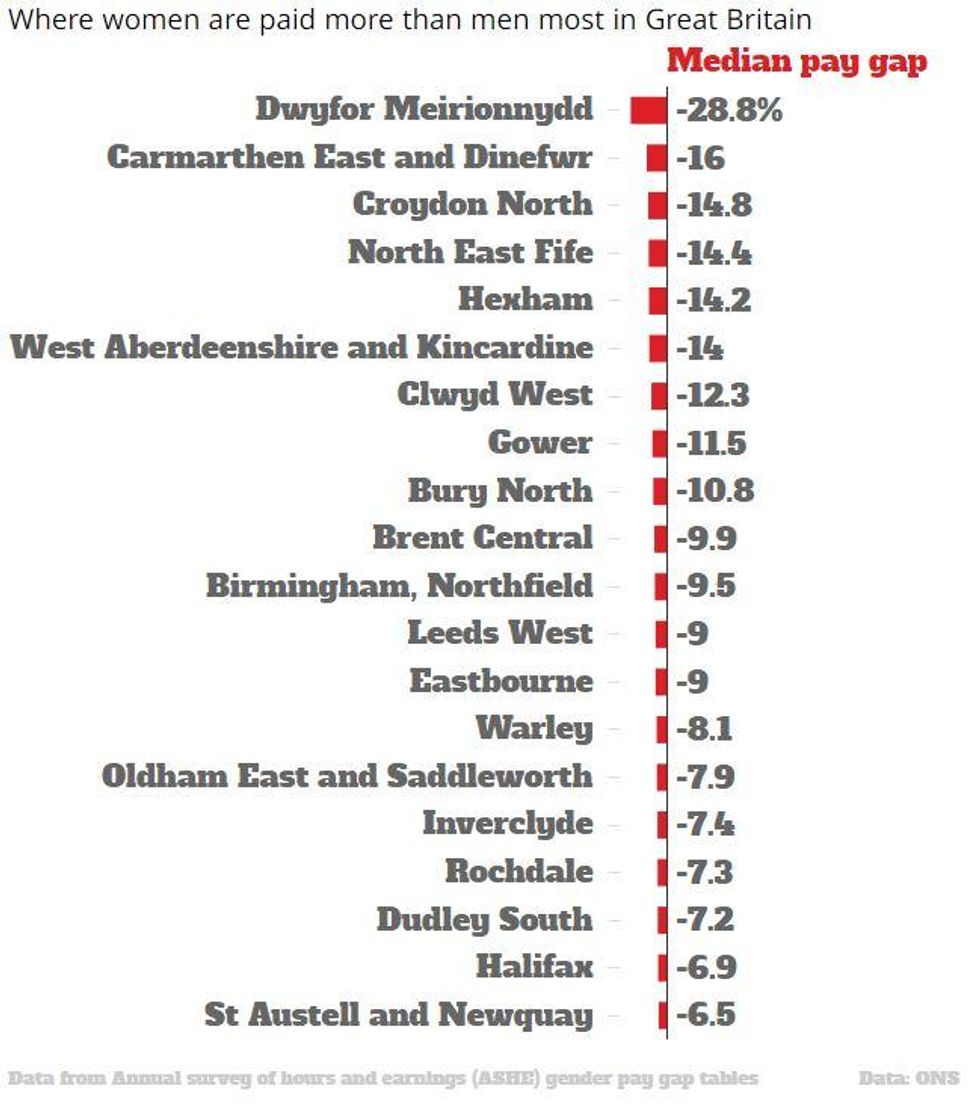News
Louis Dor
Dec 06, 2017

Picture:
Datawrapper/indy100
This year, 10 November marked Equal Pay Day, a day used by campaigners to mark as the date that women, as one homogenous average group across the UK, stop earning relative to men because of the gender pay gap.
Women effectively 'work for free' for 51 days of the year because of the gap.
The problem with this is that women aren't one homogenous group.
Not to detract from the important issue of gender pay disparity, but people work full time and part time, in different industries at different pay grades.
It has been illegal to pay someone a different wage in the UK since the Equal Pay Act of 1970.
Unequal wage averages arise because it is predominately men who work in higher management roles and who are promoted more often than women.
Averages are also affected by the fact that a smaller proportion of men become homemakers or househusbands, compared to the number of women who leave full-time work for childcare.
More women work part-time, as is reflected in the ONS' data release:
For part-time employees separately, we see a different pattern, whereby women are paid more per hour, on average than men. However, as with the full-time gender pay gap, this part-time gender pay gap moved closer to zero, from negative 6.1 per cent in April 2016 to negative 5.1 per cent in April 2017, as earnings for part-time men increased by more than for women.
Averages also differ around Great Britain - your Equal Pay Day may be different based on where you live.
Using gender pay data from the Office for National Statistics, we've made a map.
You can explore the data on the map below:
We should note that the ONS data release notes that some parts of the data are of varying quality. Some are good, some are reasonable, some are lower quality, according to their key. Those considered unreliable entirely have been omitted.
We have also used the median average, rather than the mean, to reflect the "middle" person in society, rather than the average skewed by upper outliers.
Some campaigners argue the mean should be used to reflect these outliers. If Richard Branson walks into a pub, the mean wealth of each person in the pub is millions, but the people aren't millionaires.
The top 20 locations in terms of difference, for both genders, were as follows (for both full time and part time work):
Out of the 642 areas included in the dataset, men were paid more in 567.
On a regional basis, as opposed to local areas, men were paid more in every region.
HT BBC
More: A map of the worst places to live in Britain if you’re a woman
Top 100
The Conversation (0)














